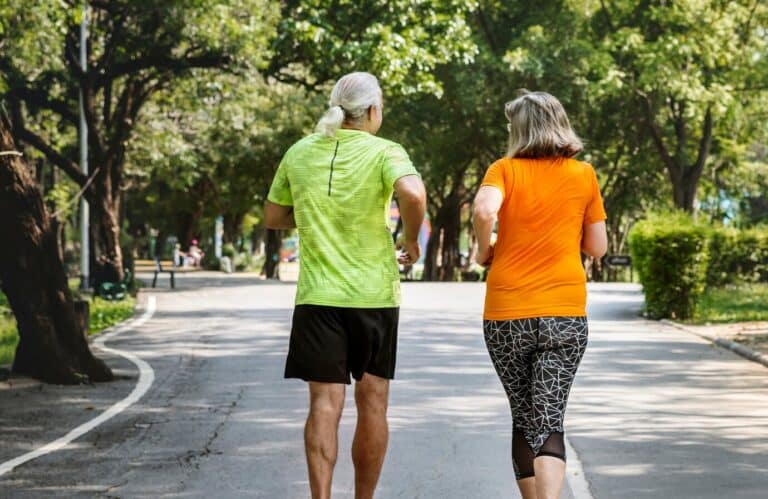It’s essential to prioritize physical activity as we age, and one of the simplest yet effective exercises for seniors is walking. This guide by Oceanview Senior Living breaks down the ten crucial steps to create a safe and effective walking workout routine for seniors. From choosing the proper footwear to incorporating gentle stretching exercises, these steps will help seniors maintain their mobility, strength, and overall well-being through a regular walking routine. Let’s investigate the critical elements of a successful senior walking workout plan.
Choose Comfortable Footwear
Supportive Sneakers
Suppose you are looking for a reliable option for your senior walking workout routine. In that case, supportive sneakers should be your go-to choice. These shoes offer cushioning and arch support that can help prevent discomfort or injury during your walks.
Proper Fit
Undoubtedly, having the right fit is crucial when selecting footwear for your walking routine. Ill-fitting shoes can cause blisters, soreness, or even potential foot issues. Ensure that there is enough room for your toes to wiggle and that the heel of the shoe is tight enough.
The key to a proper fit is to measure your feet regularly, as they can change in size over time. It’s recommended to try on shoes later in the day when your feet are at their largest. Additionally, consider specific foot conditions, such as bunions or flat feet, and choose shoes that accommodate these needs.
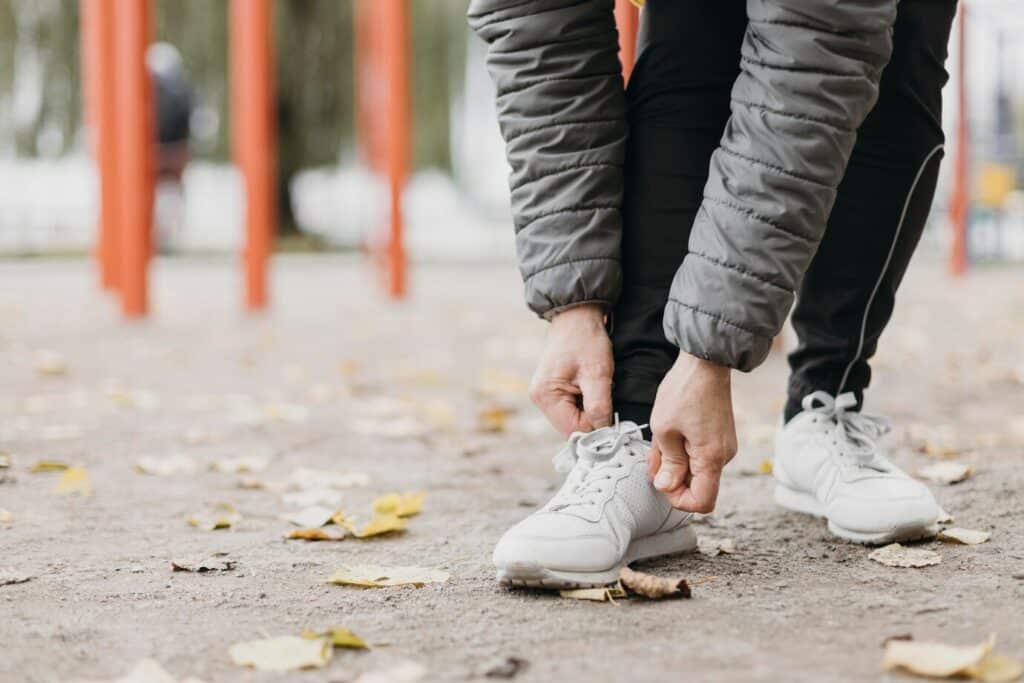
Supportive Sneakers
Plan Your Route
Planning your walking route is crucial for a successful senior walking workout routine. By carefully selecting your path, you can ensure an enjoyable experience that promotes safety and well-being.
Even Terrain
When selecting a route for your senior walking workout, consider choosing one with even terrain. This will help prevent unnecessary strain on joints and reduce the risk of potential falls. Look for paths that are flat and free from obstacles like rocks, roots, or uneven surfaces.
Safe Location
Some factors to consider when choosing a safe location for your senior walking workout include proximity to your home or a senior living facility, well-lit areas, and minimal traffic. Additionally, opt for routes that have accessible restrooms and benches in case you need to take a break.
Any route you choose should have clear and well-maintained signage to ensure a smooth, uninterrupted walking experience. Prioritizing safety and comfort while planning your walking routes will contribute to a more enjoyable and beneficial workout routine for seniors.
Start with Warm-Up
Remember that a proper warm-up is crucial before starting any exercise routine, especially for seniors. It helps to prevent injuries and prepares the body for physical activity. During the warm-up session, focus on gentle movements and stretches to get the blood flowing and loosen up the muscles. This step is imperative to ensure a safe and effective workout for seniors.
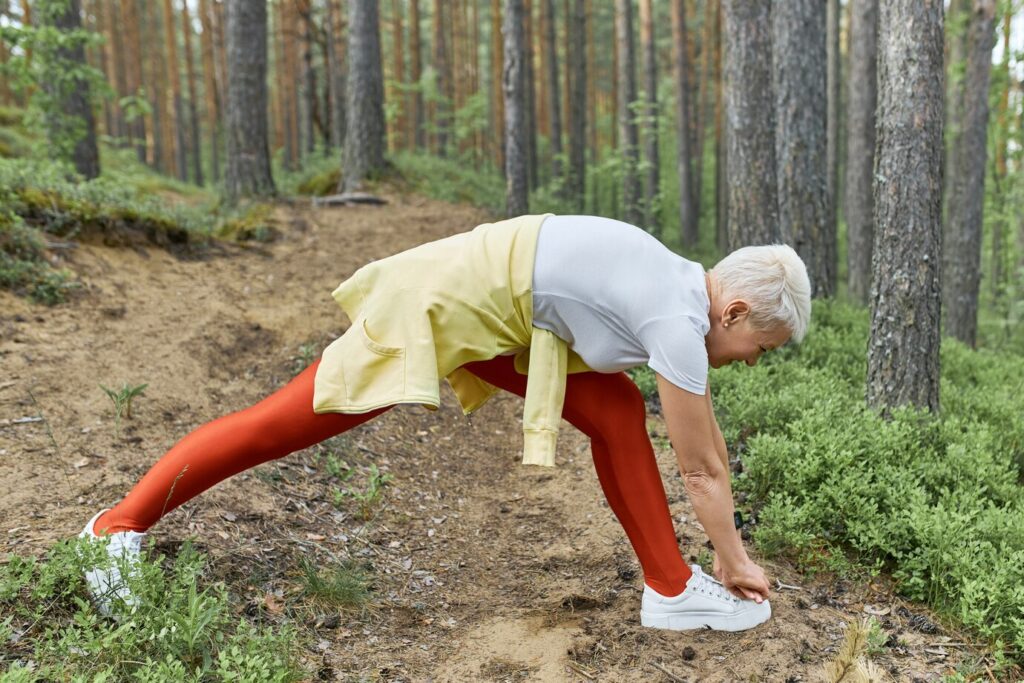
Warm-Up
Gentle Stretching
Gentle stretching can help seniors improve flexibility and range of motion. Performing simple stretches for major muscle groups can alleviate stiffness and improve circulation. Focus on holding each stretch for 15-30 seconds, and remember to breathe deeply throughout the movements. Stretching should never be painful; it should feel like a gentle pull without causing any discomfort.
Slow Pace
Any senior walking workout routine should start slowly to allow the body to acclimate to the exercise gradually. Walking at a slow and steady pace helps to build endurance and prevent fatigue. Seniors can gradually increase their speed and distance as they develop their strength and stamina. Consistency is critical, so finding a comfortable pace that allows for a challenging yet achievable workout is imperative.
Set a Pace
Your senior walking workout routine should start with setting a pace that is comfortable yet challenging for you. You must find a speed that allows you to maintain consistency throughout your walks.
Maintain Steady Speed
If you get out of breath or feel fatigued too quickly, it may be a sign that you are walking too fast. Slow down your pace to one that allows you to converse without struggling for breath. This steady speed will help you build endurance and prevent injury.
Listen to Body
Body awareness is crucial during your senior walking workout. Listen to your body’s signals, such as discomfort in your joints or muscles. If you feel any pain or severe discomfort, stop immediately. It’s necessary to differentiate between pushing yourself to improve and harming your body.
Use Proper Form
Stand Upright
One crucial element of your walking workout routine is maintaining proper posture. Standing upright helps prevent injuries and improves your overall balance and stability as you walk. Keep your shoulders relaxed, engage your core muscles, and align your head with your spine. Remember to look straight ahead and avoid slouching to optimize your walking form.
Swing Arms
Proper arm movements can enhance your walking workout. Efficiently swinging your arms in sync with your strides not only boosts your walking speed but also engages additional muscles, providing a full-body workout. Ensure that your arms are bent at 90-degree angles, and swing them naturally back and forth as you walk. Focus on maintaining a rhythmic and balanced arm movement throughout your workout, maximizing the benefits of your exercise routine.
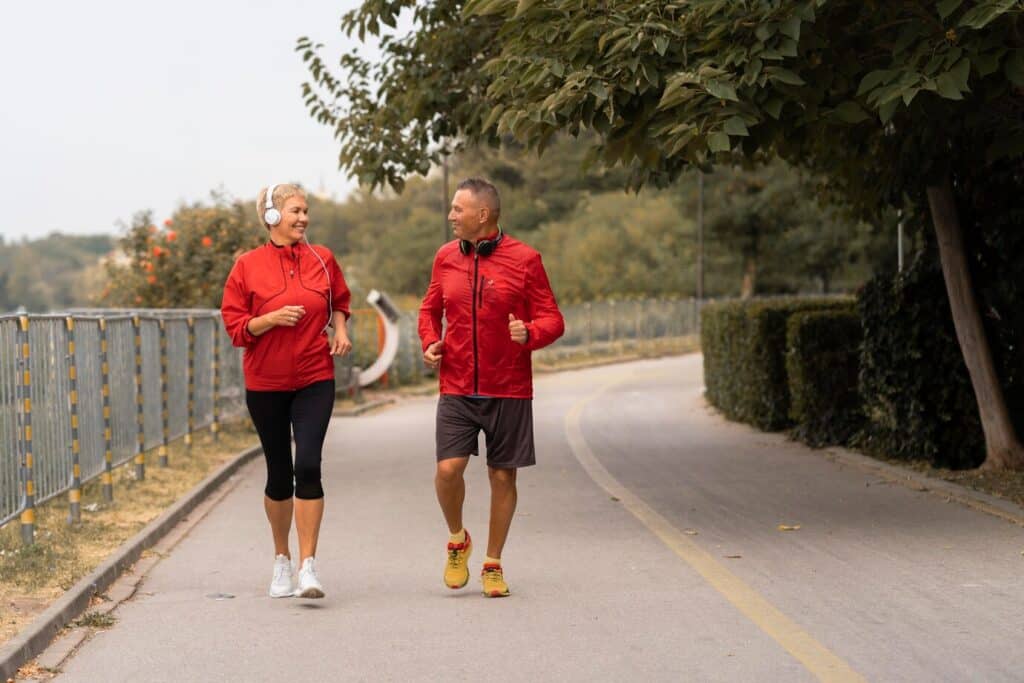
Proper Form
Stay Hydrated
Carry Water
Many underestimate the importance of hydration during a senior walking workout routine. It is crucial to always carry a water bottle with you to stay well-hydrated throughout your exercise.
Drink Regularly
Drinking water regularly is a necessary part of staying hydrated during a senior workout routine. Aim to take small sips every 10-15 minutes to replenish fluids lost through sweating and maintain optimal performance. Dehydration can lead to fatigue, muscle cramps, and decreased endurance, so be proactive in preventing it.
Avoid dehydration by listening to your body’s signals and drinking water before you feel thirsty. Remember, staying hydrated is critical to successful and enjoyable senior walking workouts.
Incorporate Intervals
Speed Variations
Even with low-impact exercises, like walking, speed variations can significantly boost your workout routine. Incorporating intervals of faster-paced walking can help increase your heart rate and improve cardiovascular health. Try alternating between a moderate pace and a brisk walk to challenge yourself and enhance the effectiveness of your workout.
Rest Periods
Any routine, including a senior walking workout, should include adequate rest periods. Rest periods allow your body to recover between intervals and prevent overexertion. Listening to your body and taking short breaks when needed is essential. Plus, staying hydrated during your workout can help maintain your energy levels and overall performance.
Focus on Breathing
Deep Breaths
Despite its simplicity, breathing is a fundamental aspect of any workout routine, especially for seniors. Deep breaths provide necessary oxygen to your muscles, helping to improve endurance and overall performance during your walking sessions.
Consistent Rhythm
Focus on maintaining a consistent rhythm while breathing during your senior walking workouts. By establishing a steady breathing pattern, you can enhance your walking experience, reduce fatigue, and maximize the benefits of your exercise routine.
Maintaining a consistent breathing pattern during your workouts can also help regulate your heart rate, promote relaxation, and contribute to a more enjoyable and effective walking session.
Cool Down
Now that you’ve completed your senior walking workout routine, focusing on cooling down is essential. A proper cool-down helps gradually restore your heart rate and breathing, preventing dizziness or discomfort after exercise. Take your time to slow your pace and ease into the final phase of your workout.
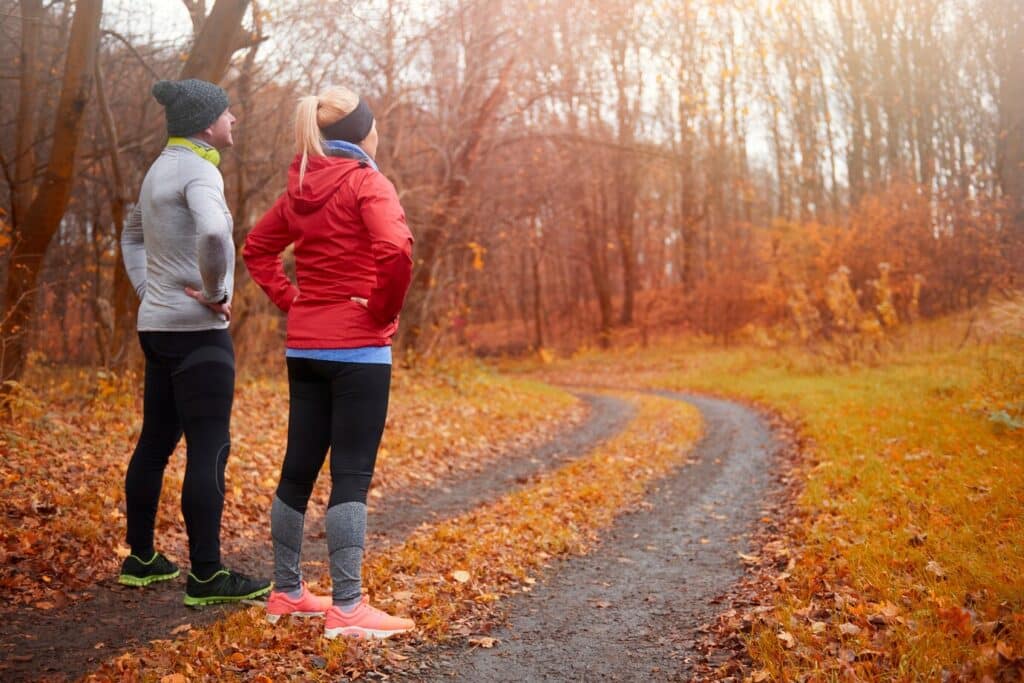
Cool Down
Slow Down
Even though you might be tempted to stop immediately after your walk, slowing down is vital to prevent muscle soreness and reduce the risk of injury. Gradually decrease your speed and finish with a gentle stroll to allow your body to transition from exercise to rest.
Stretch Muscles
While cooling down, remember to stretch your muscles to enhance flexibility and prevent tightness. Focus on critical areas like your calves, hamstrings, and quads. Hold each stretch for 15-30 seconds, breathing deeply and feeling the tension release. This will help improve your overall muscle health and range of motion.
Plus, stretching after your workout can help alleviate any post-exercise stiffness or discomfort. Include a variety of stretches in your cooldown routine to target different muscle groups and promote proper recovery.
Track Progress
Use Pedometer
All successful senior walking workout routines begin with proper tracking. Assuming your pedometer is strapped on, you can accurately gauge the number of steps you take daily. Make it a goal to increase your step count to enhance your fitness level gradually.
Note Achievements
Track your progress by noting your achievements. Celebrate milestones such as reaching specific steps in a day or week. Keeping a record of your accomplishments motivates you to continue pushing yourself further. This sense of achievement can boost your confidence and inspire you to set and achieve new goals.
Conclusion
Considering all the points discussed, implementing a senior walking workout routine can greatly benefit older adults in maintaining their physical and mental well-being. By following the ten vital steps outlined in this guide, seniors can improve their cardiovascular health, strengthen their muscles, and enjoy the many advantages of regular physical activity. It is vital to consult with a healthcare professional before starting any new exercise program and gradually increase the intensity and duration of the walks. With a focus on safety, proper form, and consistency, seniors can experience enhanced mobility and overall quality of life. Start today and prioritize your health by incorporating a senior walking workout routine into your daily schedule.
FAQ
Q: What are the benefits of a senior walking workout routine?
A: A senior walking workout routine helps improve cardiovascular health, strengthen muscles, enhance balance and coordination, boost mood, and increase physical endurance.
Q: How often should seniors engage in a walking workout routine?
A: Seniors should aim to walk for at least 30 minutes a day, five days a week. To avoid overexertion, they should start slow and gradually increase the duration and intensity of their walks.
Q: Are there any safety tips seniors should follow while walking for exercise?
A: Yes, seniors should always wear supportive footwear, stay hydrated, warm up before walking, be mindful of their surroundings, and consult with a healthcare provider before starting a new exercise routine, especially if they have any existing health conditions.
Key Takeaways:
- Proper Warm-up: Start your senior walking workout routine with a gentle warm-up to prevent injury and prepare your muscles for exercise.
- Include Strength Training: Incorporate exercises focusing on strength and balance to improve overall fitness and reduce the risk of falls.
- Stay Consistent: Consistency is key in any fitness routine. Aim to walk at least 30 minutes a day and gradually increase intensity as you progress.
Call Oceanview Senior Living at 541-574-0550 to learn more about our senior activity programs. Start your journey to a healthier lifestyle today!

